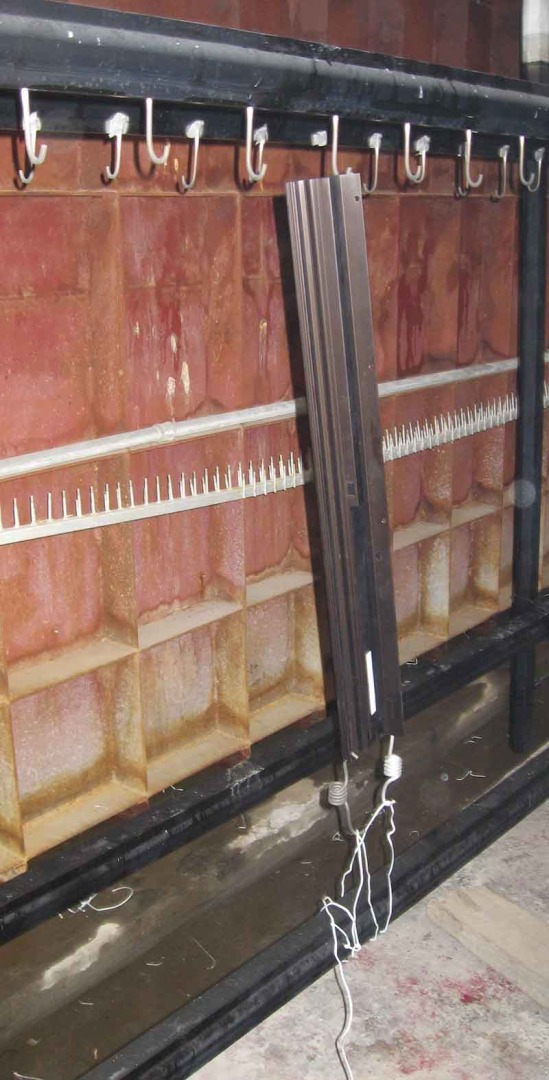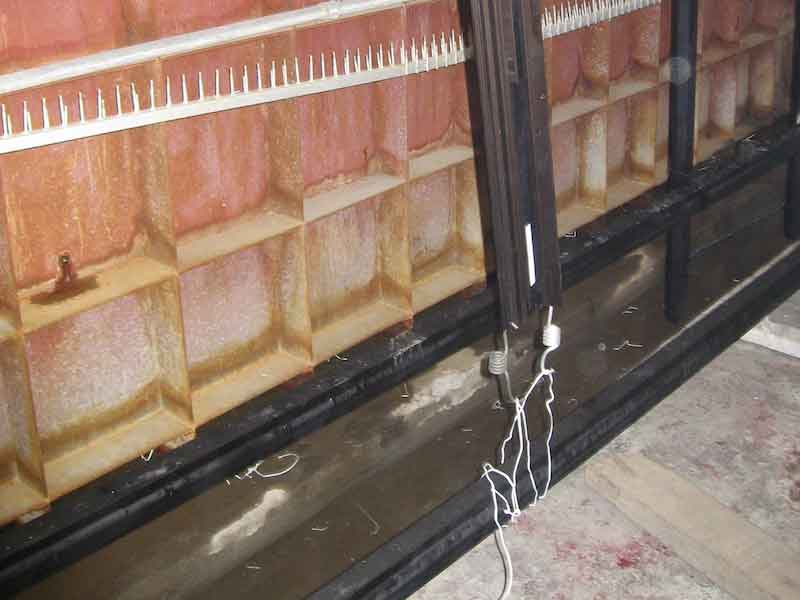We often talk about the anodizing process itself and how we can improve it. But today, we’ll start a little before the actual anodizing step.
 Anne Deacon Juhl, PhDA huge problem for many anodizers happens way before, and it can impact both the aluminum oxide, quality and thickness, coloring, and sealing.
Anne Deacon Juhl, PhDA huge problem for many anodizers happens way before, and it can impact both the aluminum oxide, quality and thickness, coloring, and sealing.
When we talk to students in AnodizingSchool, or companies we consult, it’s clear that the steps before the actual process are just as important to ensure that your anodized aluminum comes out looking great.
Over the years, I’ve discovered a widespread and common mistake when racking aluminum. Maybe you can guess it when you see this picture?
The Mistake

Racking the aluminum part this way will make it impossible for you to obtain a stable and secure contact between the aluminum and rack throughout the whole anodizing process. The part will dangle back and forth, leaving it impossible for the chemical residue to be trapped in the holes between the parts and the aluminum thread.
Because the aluminum will be moving, the contact point will change, and the current will meet an aluminum surface that has already been Anodized. This gives you an uneven flow of the applied current - leading to burning and inhomogeneous oxide thickness on the part, which again leads to differences in coloring and quality.
Not the best practice in anodizing.
The Fix
So, what should you do instead? You will need to secure a tight and clean contact between the rack and the aluminum. The most common materials are aluminum (6061 or 6063) or titanium (commercially pure grades).
Actually designing your rack, you will need to be creative. It needs to have room for as many parts as possible to make your Anodizing Line efficient and profitable, but at the same time, you need to make sure the solution is not entrapped anywhere and that your rack material can carry the applied current.
Not on parts, and not on racks. If the rack is difficult to clean, the entrapment will give you problems in all process tanks with cleaning, leaving etching solutions in edges and holes. That’s not good for your final product.
So to sum it up:
- You need to secure a tight and clean contact between your rack and the aluminum
- The design of your rack should make room for as many parts as possible without the possibility of entrapping the solution
- Common materials for racking are aluminum (6061 or 6063) and titanium (commercially pure grades)
Dr. Anne Deacon Juhl, owner of AluConsult and AnodizingSchool, and an industry expert in aluminum anodizing. Contact her at info@anodizingschool.com
Get the to-do list “4 Actions to Increase The Revenue Of Your Anodizing Line Today.” At AnodizingSchool, we’ve put together a guide of things you can do to increase the revenue of your Anodizing Line. Do you want to improve your anodizing process and impress customers with reliability and quality? Do you want a smooth-running anodizing line - avoiding unnecessary cost and always booked? Implementing our four simple actions will help you on your way to being better than best – saving money at the same time. Get your to-do-list right here: https://mailchi.mp/anodizingschool/v6j6c12ay3



































